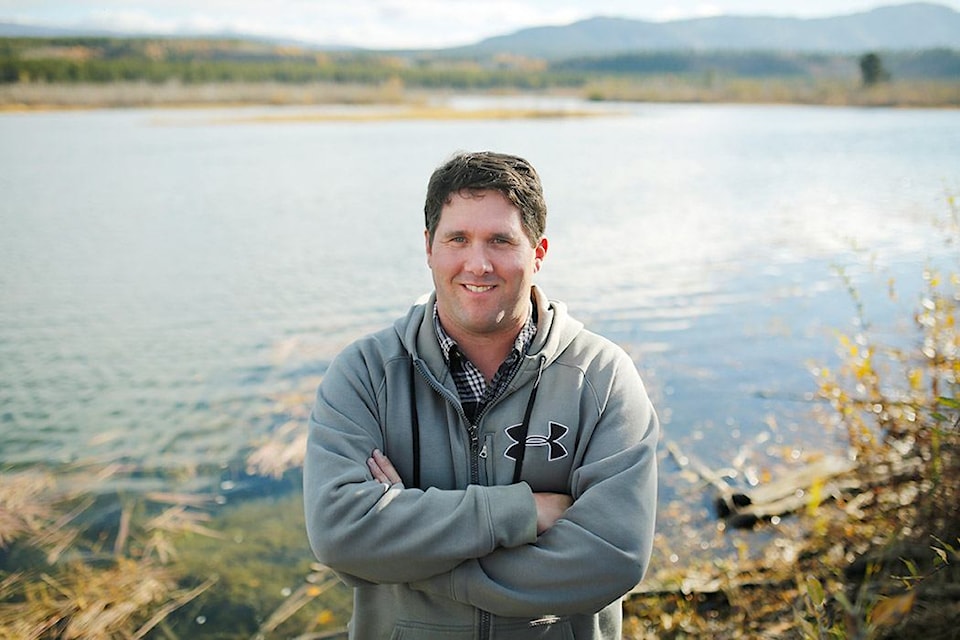You might not think much of bogs. They’re wet and buggy, sure, and they don’t always smell very nice.
But these spongy peatlands are currently at the centre of a Yukon Supreme Court case over placer mining in the Indian River valley south of Dawson City.
They’re also part of the motivation for a new, two-year partnership between Ducks Unlimited Canada and the Klondike Placer Miners’ Association, which aims to understand how best to reclaim wetlands after placer miners move on.
“We thought that in most places (where) placer mining is going to be going ahead, is there a way to help design the ponds that are left behind so that they’re going to be as beneficial as possible, at least to waterfowl?” said Jamie Kenyon, a conservation specialist with Ducks Unlimited.
Wetlands are fragile and difficult to restore. It’s said that peat, the organic layer that supports bogs and fens, grows by just one millimetre each year, meaning a layer one metre thick could take a thousand years to form.
But that doesn’t mean disturbed wetlands must all become bleak scars on the landscape. Kenyon explained that the settling ponds left behind by miners can become habitat for waterfowl and beavers.
Over the next year, a team of researchers will study 60 to 70 existing ponds that have been created by miners in the Indian River valley. They will look at what conditions are best for waterfowl, including the depth, shape and water chemistry of the ponds. Kenyon said they plan to count the waterfowl on the various ponds in the spring, and will then count their broods in July.
They plan to have a final report written by March, 2018.
Randy Clarkson, with the Klondike Placer Miners’ Association, said his organization has committed more than $10,000 to the project. Ducks Unlimited will contribute $50,000, and another $80,000 will come from Environment Canada and the Yukon government, he said.
“We’re very data-deficient in the Yukon, so trying to get some data for the Yukon will probably be a bit of a first,” Kenyon said.
In most cases, these ponds are a different type of wetland from the bogs and fens that were there naturally, and will support different plants and animals. But they still have ecological value, Kenyon said.
“We’re kind of going on the assumption that placer mining is going to happen, these ponds are going to be created,” he said. “But … we’ll try to find out what a good pond should look like and see if we can offer up a best management practice.”
Clarkson said reclamation practices in wetlands have already improved compared to what they once were.
Instead of just leaving big piles of gravel behind, miners now create shallow slopes down to the edges of the ponds and cover them with soil, he said. They also make the shorelines irregular to provide more diverse habitat for birds and other animals.
But Clarkson said the Yukon Environmental and Socio-economic Assessment Board’s (YESAB) requirements for reclamation plans in wetlands have gotten more stringent in the last few years, which is what inspired this new research project.
“I know there’s people that think nothing good can come from mining,” he said. “(But) we think we can reclaim lots of the peatland wetland into marsh and shallow water wetland.”
Kenyon said having more information about how best to reclaim mined wetlands should help with the environmental assessment process.
“I think that what will happen is that if we’re able to show that there are certain characteristics … that the waterfowl like, it’s a tangible, measurable bit of information that the regulators can take into consideration when they get an application in front of them,” he said.
Still, it’s not clear that this research will make placer miners in the Indian River valley more likely to get their applications approved.
YESAB spokesperson Rob Yeomans said the board is “recommending that naturally occurring wetlands be undisturbed” in the Indian River area, because the Tr’ondek Hwech’in First Nation and the Yukon government have raised concerns about development in the watershed.
The issue came to a head earlier this year, when YESAB recommended that a placer mining company with claims in the Indian River valley, called Northern Exposures Inc., not be allowed to mine in any undisturbed wetlands.
In its decision a month later, the Yukon government overturned that recommendation, instead requiring that the company provide a wetland reclamation plan for the areas it planned to mine.
But in July, the Yukon Water Board decided to ignore the Yukon government and issued a licence that prohibited Northern Exposures from mining in undisturbed wetlands, a decision that prompted the government to take it to court.
In its recommendation, YESAB wrote that the Indian River watershed contains 136 mapped wetlands ranging in size from 0.2 to 512 hectares. Tr’ondek Hwech’in also claimed that the watershed “contains the most extensive wetland complexes in their territory,” according to the report.
Yeomans said the board is interested in this new research project. But he said the board’s recommendations are driven by the values that people attach to the undisturbed land.
“If folks like the Tr’ondek Hwech’in First Nation say ‘These are our values,’ … that’s what we’ll be looking at in our assessment,” he said.
So just because ponds make good habitat for ducks and beavers, that doesn’t mean it’s going to be open season on all the squishy, mucky bogs out there.
Contact Maura Forrest at maura.forrest@yukon-news.com
